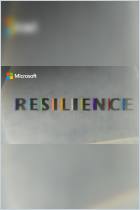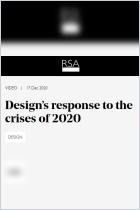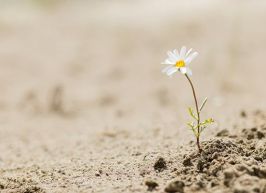Acesse a sua conta getAbstract para obter o resumo!

Acesse a sua conta getAbstract para obter o resumo!
Microsoft | Societal Resilience
Discovering New Ways to Find Resilience
Resilience – Episode 3
Microsoft, 2021
Sobre o que é?
Microsoft executives discuss how we can come together to build a moreresilient societyusing sensors, ventilation and smart cards as examples.
Recommendation
During the COVID-19 pandemic, Microsoft executives discovered new paths to resilience that inspired lifesaving innovations and deeply significant collaborations between scientific researchers and their communities. People of all disciplines and perspectives converged to solve almost incomprehensible challenges such as passive viral sensors, improved ventilation and smart health cards. As one leader stated, “Science and technology offer the opportunity to fuel discovery and magnify our ingenuity.”
Take-Aways
- The COVID-19 pandemic altered how people learn, work and associate with each other in communities.
- Passive sensors enabled fresh scientific perspectives in the age of COVID-19.
- The World Health Organization considers ventilation to be a major factor in controlling COVID-19.
- Smart health cards now serve as simple, efficient vaccine credentials.
Summary
The COVID-19 pandemic altered how people learn, work and associate with each other in communities.
Crises push individuals to evolve, adapt and innovate. During the COVID-19 pandemic, researchers worked together to create new methods of clinical testing. This unprecedented collaboration resulted in important new diagnostics, therapeutics and vaccines.
“It’s been really humbling to see so many people from so many different walks of life come together and try to tackle something that is almost inconceivable.” (Bichlien Nguyen, PhD, senior researcher, Microsoft Research)
The term “multidisciplinary” means bringing people of “awe-inspiring depth” together to accomplish great things.
It is time for businesses, organizations and individuals to fully realize their impacts on others. Technology should be developed within communities – for communities.
“A huge amount of scientific discovery is, for lack of a better word, pure luck.” (Dr. Peter Lee, corporate vice president, Microsoft Research and Incubations)
While acknowledging that each individual possesses unique values, views and beliefs, all people and possibilities must be folded into the creative process. Scientific and technological breakthroughs help to address issues of togetherness as society opens again.
Passive sensors enabled fresh scientific perspectives in the age of COVID-19.
Crisis recovery presented a big challenge for researchers during the pandemic. Creating new research tools became a necessity. One challenge presented was how to track the virus as it moves through cities, to provide insights about exposure hazards individuals faced. One group tried placing “passive fabric sensors” into bus air conditioners and heating systems to detect viral RNA.
“How I see this advancing is that we’re...going to try to do whole-genome sequencing of the entire biological material that’s on our filters, so that we can...understand collectively what’s going on in our biological environment within a bus.” (Bichlien Nguyen)
This data proved especially powerful in regions of the world where testing millions of people isn’t possible. The sensors can reveal hot spots throughout cities, or entire countries.
Society is entering a more “hybrid” work environment, where spatial analysis can reveal whether people are compliant with social distancing, mask-wearing and other virus safety precautions that enable businesses to safely open. Retailers can use spatial analysis to better manage product availability and minimize the number of people waiting in line.
Different communities reflect various perspectives and viewpoints, which drive such systems’ design. When designers work directly with users, it enables proper context and better product quality, which leads to stronger protocol adoption.
“I believe that ethics improves product quality. It’s very important to be transparent. What are the benefits to them? Who has access to the data? How long is the data retained?” (Arathi Sethumadhavan, PhD, head of research – ethics and society, Microsoft)
Many people have difficulty connecting with things that cannot be seen, or physically touched. That’s why helping people “visualize the unseen” becomes critical. Simulations play an important role in visualization, and in providing insights to researchers about how concentrations of infection spread disease. For example, a computer performing a simulation using three billion “computational cells” provides data about every individual cell. Researchers can vary parameters to recommend allowing more or fewer people into a stadium, or to advise more ventilation for an indoor environment. The key aspect is proving that such solutions are reliable.
The World Health Organization considers ventilation to be a major factor in controlling COVID-19.
The World Health Organization recommends ventilating “six to 12 times more” than typical buildings do today. Many small businesses and schools can’t afford to meet this challenge. Researchers now advocate a combination system of air cleaning and ventilation that improves efficiency, works faster and costs less than ventilation alone.
“If it’s an air cleaner, you put the power plug into the socket. And that’s it, you have a reduction in aerosol concentrations of up to 95%.” (Bert Blocken, PhD, professor of civil engineering, Eindhoven University of Technology and KU Leuven)
The team that developed this system employed computer simulations of indoor environments. Rather than focusing on shutting buildings down, they worked toward opening them up with cleaner air inside.
Smart health cards now serve as simple, efficient vaccine credentials.
Smart health card technology was developed over the past year, through a close collaboration with scientific and business communities. The cards allow people to carry vaccine documentation with them, printed on a piece of paper or displayed on a smartphone.
“The thing that’s really impressed me throughout this pandemic response has been how much we can get done when we have focus and when we understand what are the most important things to accomplish.” (Josh Mandel, MD, chief architect for healthcare, Microsoft Research)
Health care providers, records purveyors and medical organizations convened to design and deploy the smart cards, focusing on specific technology goals. The collaborators accomplished more in a short time than had been done in the previous five years. The cards provide a reliable way to check vaccine credentials and other types of clinical information, creating a new era of data interoperability among health care providers and public health agencies. The entire process was predicated on pure scientific research, which had never been applied to this type of problem before.
“It has happened in the past that new paradigms of science emerge and catalyze whole new communities of researchers.” (Dr. Peter Lee)
New pathways to unexpected insights, collaborations and partnerships emerged during the past year. Those connections exist “at the intersections of diverse disciplines and industries.” The successful projects that transpired were born of crisis response.
During the next few years, scientists will work towards a clearer definition of “crisis response science” and “societal resilience.” This will strengthen responses to future disasters in the global human community.
About the Speaker
Microsoft Corporation is an American multinational technology corporation that produces computer software, consumer electronics, personal computers, and related services.
This document is restricted to personal use only.



















Comment on this summary